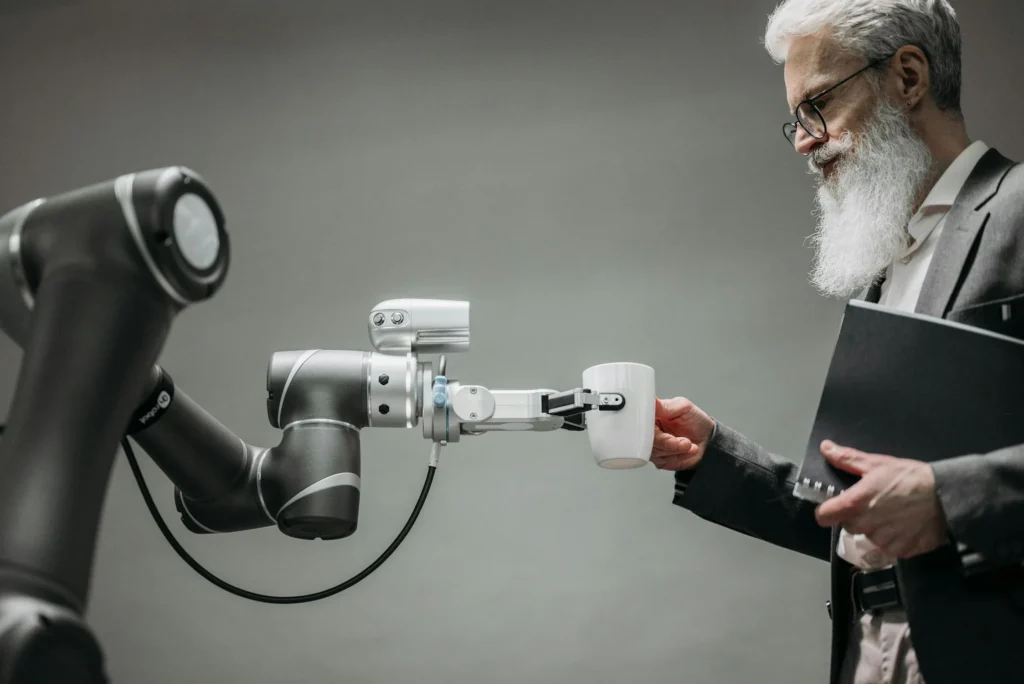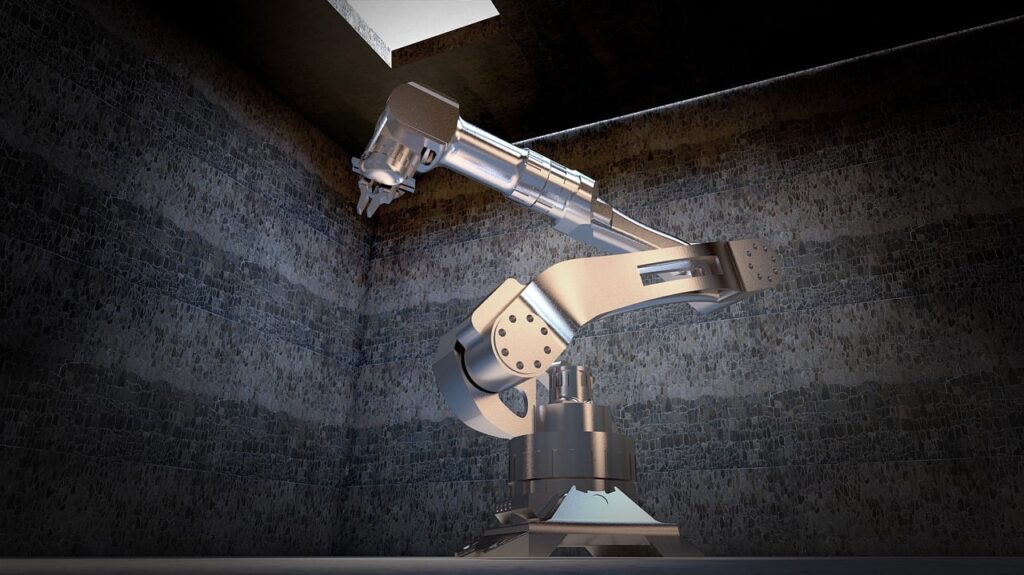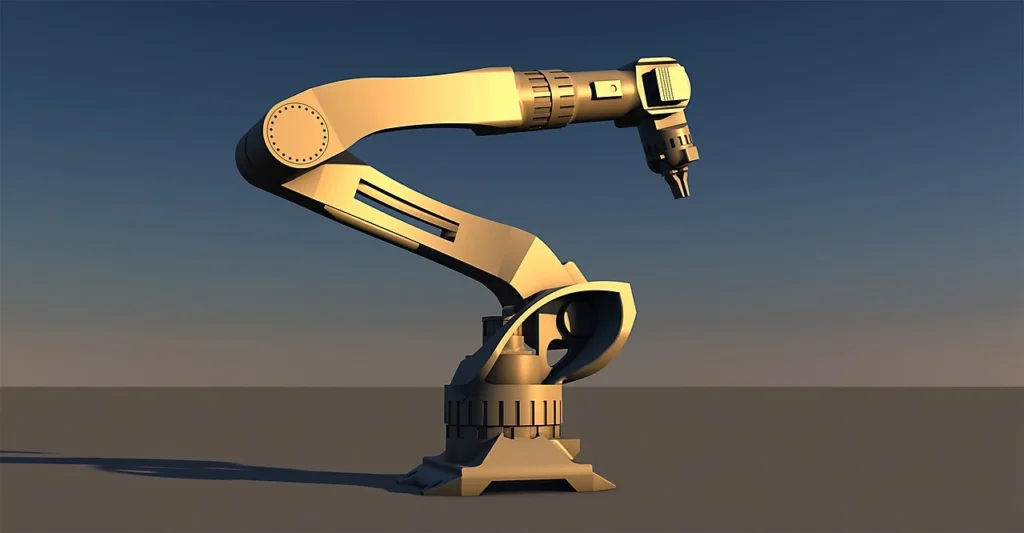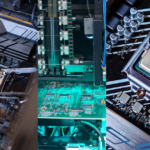As technology advances, automation and robotics have become integral to various industries. Robotics technology has transformed how tasks are performed, making them more efficient, precise, and cost-effective. This article explores the definition, applications, examples, and benefits of robotics technology, emphasizing its importance in today’s world.

What is Robotics Technology?
Robotics technology is a multidisciplinary field that focuses on the design, construction, and operation of robots to perform tasks traditionally carried out by humans. At its core, this technology integrates mechanical engineering, electrical engineering, and software development to create machines that can automate processes with precision and efficiency. By incorporating advanced computer systems, sensors, and artificial intelligence (AI), robotics technology equips robots to interact intelligently with their physical surroundings.
The foundation of robotics lies in its ability to merge hardware and software seamlessly, enabling robots to sense, analyze, and act upon their environment. Sensors provide real-time data, while AI processes this information to guide the robot’s actions. This combination allows robots to execute complex and repetitive tasks with speed and accuracy, making them invaluable in a variety of industries.
As the technology evolves, robotics continues to push boundaries, reshaping how industries function and enhancing the quality of life. By automating labor-intensive processes and tackling high-risk tasks, robotics technology is a driving force behind innovation, offering limitless possibilities for the future.
The Importance of Automation and Robotics Technology
Automation and robotics technology have transformed modern industries, becoming indispensable tools for enhancing operational efficiency and precision. These advancements are reshaping how tasks are performed across various sectors, providing significant benefits that make businesses more competitive and sustainable.
Increased Productivity
Automation and robotics systems operate continuously without the limitations of human fatigue, enabling round-the-clock production. This capability drastically improves output, helping industries meet increasing demands. Robots ensure consistency, eliminating variations caused by human intervention, which is critical in high-volume manufacturing.
Cost-Effectiveness
Investing in automation and robotics can lead to long-term cost savings by reducing reliance on human labor and minimizing errors. Fewer mistakes mean less wastage, lower material costs, and fewer resources spent on quality control. Additionally, automation optimizes workflows, shortening production times and increasing profit margins for businesses.
Improved Safety
Safety is one of the most compelling advantages of robotics technology. Robots excel in performing tasks that are hazardous for humans, such as handling toxic materials, working in extreme temperatures, or operating in high-risk environments. By taking on these dangerous jobs, robotics ensures the well-being of workers while maintaining productivity.
Unmatched Precision
Advanced robotics technology offers unparalleled accuracy in delicate and intricate tasks. For instance, robots in the medical field perform complex surgeries with minimal error margins, while in manufacturing, they assemble products with incredible precision. This level of accuracy is crucial in industries where precision is paramount.
Automation and robotics continue to push boundaries, driving innovation and efficiency. By integrating these technologies, industries can thrive in an increasingly competitive global landscape.

Examples of Robotics Technology
The rapid advancements in robotics technology have enabled its use in a wide range of fields, making it an integral part of modern life. Below are some prominent examples that showcase its versatility:
Industrial Robotics
Industrial robots have revolutionized manufacturing with their efficiency and precision. Automated robotic arms are commonly used for welding, painting, and assembling parts in factories. These robots streamline production, reduce human errors, and operate tirelessly, boosting productivity in industries like automotive and electronics.
Medical Robots
Medical robots are transforming healthcare with cutting-edge innovations. Surgical systems like the da Vinci Surgical System allow surgeons to perform complex procedures with enhanced precision and minimal invasiveness. They assist in delicate tasks, improving patient outcomes and recovery times, and setting new standards in medical care.
Agricultural Robots
In agriculture, robotics technology has optimized farming activities, improving efficiency and sustainability. Drones equipped with sensors monitor crop health and irrigation, while automated tractors handle plowing and harvesting. These innovations save time, reduce labor costs, and help farmers achieve higher yields.

Construction Robotics Technology
Robotics in construction is reshaping the industry with groundbreaking solutions. Bricklaying robots and 3D printing systems automate time-consuming tasks, ensuring faster project completion and consistent quality. Such technology reduces construction waste and enhances safety on-site, making it a game-changer for builders.
Service Robots
Robotics technology is also improving customer experiences in service industries. Robots used in hospitality, retail, and cleaning perform tasks like delivering room service, stocking shelves, or vacuuming floors. These service robots ensure efficiency and enhance customer satisfaction, reflecting the expanding scope of robotics in everyday life.

Construction Robotics Technology: Transforming the Industry
The construction industry is undergoing a technological revolution with the adoption of robotics. Construction robotics technology addresses labor shortages, enhances efficiency, and ensures precision in project execution. By automating repetitive and labor-intensive tasks, robotics not only reduces the workload on human workers but also increases safety on job sites. This integration is paving the way for faster, cost-effective, and sustainable construction practices.
Key Applications of Construction Robotics
Bricklaying Robots
Bricklaying robots automate the labor-intensive process of laying bricks, significantly improving productivity. These machines can lay thousands of bricks in a day, ensuring uniformity and precision that is difficult to achieve manually. This technology reduces labor costs while speeding up construction timelines.
Concrete Pouring Robots
Concrete pouring robots revolutionize construction by providing accurate and consistent pouring. They ensure that concrete is placed precisely where needed, reducing material waste and enhancing the overall quality of the structure. These robots are particularly useful in large-scale projects requiring meticulous execution.
Demolition Robots
Demolition robots take on heavy-duty tasks, making construction sites safer for workers. Equipped with advanced tools, these robots can perform precise and controlled demolitions, especially in hazardous environments. This reduces risks and accelerates project timelines.
3D Printing Construction
3D printing technology enables the creation of entire structures with minimal human intervention. Using automated processes, it constructs buildings layer by layer, optimizing material use and reducing waste. This innovative approach promotes sustainability and significantly cuts down construction costs.
Incorporating robotics into construction is not just a technological advancement but a step toward a more sustainable and efficient future. These technologies are transforming the industry, making it smarter, safer, and more productive.
Robotics Technology Programs: Bridging the Skill Gap
The rapid advancement of automation and robotics technology has created a pressing demand for skilled professionals capable of designing, programming, and managing robotic systems. Robotics technology programs are structured educational pathways aimed at equipping individuals with essential skills in robotics, engineering, and programming. These programs combine theoretical knowledge with hands-on training, making them essential for anyone looking to build a career in the robotics field. By bridging the gap between academic learning and industry needs, they prepare students for the challenges of the modern workforce.
Benefits of Enrolling in Robotics Technology Programs
Hands-On Experience
Robotics technology programs emphasize practical learning, allowing students to work on real-world projects. Through labs, simulations, and team-based problem-solving exercises, students develop a deep understanding of robotics systems. This hands-on experience not only enhances technical proficiency but also boosts confidence in tackling real-life challenges.
Industry Relevance
These programs are carefully designed to align with the evolving needs of industries such as healthcare, manufacturing, and construction. Students learn to create and operate advanced robotics systems used in automation, assembly lines, and even surgical procedures. Staying updated with industry trends ensures graduates are job-ready upon completion.
Career Opportunities
Graduates of robotics technology programs are equipped to excel in various roles, such as robotics engineers, automation designers, and AI developers. With the increasing integration of robotics across sectors, the demand for these professionals continues to rise, offering promising career prospects.
Investing in a robotics technology program is not just a step toward personal growth but also a contribution to shaping the future of innovation.

Future of Automation and Robotics Technology
The future of automation and robotics technology is incredibly exciting, with continuous innovation promising to reshape the way industries function. One of the most significant trends is the integration of Artificial Intelligence (AI). As AI technology becomes more sophisticated, robots are gaining the ability to make decisions autonomously. This means that robots will not only perform tasks but also analyze situations, learn from their surroundings, and optimize their own operations without human intervention. The combination of robotics and AI has the potential to revolutionize sectors such as manufacturing, healthcare, and logistics, where decision-making in real-time is critical.
Another emerging trend is the rise of Collaborative Robots (Cobots). These robots are specifically designed to work alongside humans in shared spaces. Unlike traditional robots that operate in isolation, cobots ensure a safer and more efficient working environment by assisting humans in tasks while minimizing the risk of injury. With their flexible, adaptable nature, cobots are ideal for industries where human-robot interaction is crucial, such as assembly lines or in medical procedures.
Robotics in Space Exploration is also advancing rapidly. Autonomous rovers and robotic systems are playing an essential role in exploring other planets. They allow scientists to gather valuable data from environments that would be too dangerous or distant for humans to explore. These robots are now equipped with enhanced AI to navigate complex terrains, analyze soil samples, and make real-time decisions, paving the way for further exploration of space.
Finally, the advent of Smart Factories powered by robotics and the Internet of Things (IoT) will lead to fully automated production lines. These factories will integrate sensors, advanced robotics, and data analytics to increase productivity, reduce waste, and improve overall efficiency. This trend promises to drive cost-effective solutions and help businesses meet the demands of an increasingly globalized marketplace.
These innovations hold immense promise to redefine how industries approach efficiency, creativity, and problem-solving, leading to a more advanced and automated future.
The Evolution of Advanced Robotics Technology
Robotics has come a long way since its inception. The integration of advanced automation and robotics technology has revolutionized the way businesses operate.
Historical Milestones
First-generation robots: Basic mechanical systems introduced in the 20th century.
Second-generation robots: Integration of sensors and basic AI in the late 20th century.
Modern robots: Sophisticated systems powered by AI, machine learning, and IoT.
Technological Advancements
Recent developments in advanced robotics technology include:
AI-powered decision-making systems.
Collaborative robots (cobots) designed to work alongside humans.
Integration of robotics in autonomous vehicles.
These advancements continue to expand the boundaries of what robotics technology can achieve.
Applications of Robotics Technology in Modern Industries
The implementation of robotics technology spans multiple sectors, creating efficiency and innovation.
1. Manufacturing
Automates assembly lines to boost productivity.
Enhances quality control with precision sensors.
2. Healthcare
Robotic surgical assistants enable minimally invasive procedures.
Robots provide patient care in eldercare facilities.
3. Agriculture
Robots perform harvesting, planting, and monitoring crops.
Drones and automated machines improve yield predictions.
4. Logistics and Warehousing
Robotics optimizes inventory management.
Automated guided vehicles (AGVs) streamline supply chains.
5. Space Exploration
NASA employs robots for extraterrestrial missions.
Autonomous systems gather data from hostile environments.
By adopting advanced robotics technology, industries can achieve unprecedented levels of efficiency and innovation.
Latest News About Robotics Technology
Staying updated on the latest news about robotics technology is crucial to understanding its dynamic growth.
Key Developments
AI-Powered Robots
Recent innovations include robots with advanced decision-making abilities.
Robotics in Renewable Energy
Robots are increasingly used in wind turbine maintenance and solar panel installation.
Military Applications
Autonomous robots play pivotal roles in surveillance and defense.
Emerging Trends
Collaborative robots (cobots) are becoming more accessible to small businesses.
Robotics technology is advancing in the field of personalized medicine.
For those keen on the latest news in robotics technology, keeping track of conferences, journals, and innovations is essential.
Advantages of Robotics Technology
Efficiency: Robotics technology offers several compelling benefits across industries. Efficiency is one of the most significant advantages, as robots can perform tasks faster and more accurately than humans. This results in higher production rates and improved output quality, particularly in industries such as manufacturing, where precision and consistency are critical. Robots can operate continuously, reducing downtime and enhancing overall productivity.
Cost reduction: Another key benefit is cost reduction. While robots require a significant initial investment, their ability to perform tasks without rest leads to lower operational costs in the long run. By automating repetitive or labor-intensive tasks, businesses can reduce the need for human labor, cutting down on wages and minimizing human errors. Additionally, robots require less maintenance than humans, further reducing costs over time.
Safety: is another area where robotics shines. Robots are designed to take over dangerous tasks, such as working in hazardous environments or handling harmful materials. By minimizing human involvement in these risky jobs, robotics technology helps prevent workplace accidents and injuries. For example, in nuclear plants or disaster zones, robots can be deployed to perform critical tasks without putting human lives in danger.
Disadvantages of Robotics Technology
High initial costs: Despite the advantages, robotics technology also has its downsides. One of the primary concerns is the high initial costs of development, installation, and maintenance. These costs can be prohibitive for small businesses, limiting their ability to adopt robotics. Additionally, the need for specialized training and ongoing system upgrades adds to the overall expense.
Job Displacement: Job displacement is another significant challenge. As robots continue to replace humans in many sectors, workers may face unemployment, particularly in industries like manufacturing, customer service, and logistics. The automation of jobs that were once human-driven can lead to significant shifts in the job market, causing economic disruption in some areas.
Ethical Concerns: Lastly, ethical concerns regarding robotics technology are becoming increasingly important. As robots become more autonomous, questions arise about AI control and usage. Who is responsible if a robot makes a mistake or causes harm? Ethical guidelines and regulations will be essential to ensure that robotics technology is used safely and responsibly, without compromising human well-being. These concerns need to be addressed as robotics continues to advance and become more integrated into daily life.
In conclusion, understanding both the advantages and disadvantages of robotics technology is essential for evaluating its impact on society and making informed decisions about its implementation.
Careers in Robotics Technology
As robotics technology continues to advance and reshape industries, the demand for skilled professionals in this field has skyrocketed. Careers in robotics technology offer exciting opportunities for individuals passionate about innovation, automation, and problem-solving. These roles not only promise high salaries but also the chance to be at the forefront of cutting-edge technological developments.
Popular Careers in Robotics Technology
Robotics Engineer
A robotics engineer is responsible for designing, developing, and testing robotic systems that can perform specific tasks autonomously. They work on creating prototypes, selecting components, and programming robots to execute complex operations in various industries like manufacturing, healthcare, and logistics.
AI Specialist
As robots become more intelligent, AI specialists play a key role in integrating machine learning and artificial intelligence into robotic systems. They develop algorithms that allow robots to learn, adapt, and make decisions based on their environment, further enhancing their capabilities.
Automation Consultant
Automation consultants advise businesses on how to effectively implement robotics technology into their operations. They assess processes, recommend robotic solutions, and ensure a smooth transition to automated systems, helping companies improve efficiency and reduce costs.
Robotics Technician
Robotics technicians focus on the maintenance, repair, and troubleshooting of robotic systems. They play a vital role in ensuring that robots remain operational and efficient, performing regular inspections, fixing mechanical issues, and upgrading software.
The Future of Advanced Automation and Robotics Technology
The future of advanced automation and robotics technology is promising, with potential breakthroughs in multiple domains.
Emerging Innovations
Robots with enhanced human-like interaction capabilities.
AI systems capable of predicting and preventing errors.
Ethical and Societal Impacts
Discussions about the ethical implications of AI and robotics will shape future policies.
Society will need to adapt to the increasing role of robots in daily life.
By focusing on sustainable and ethical advancements, the future of robotics technology holds incredible potential for improving quality of life.
In conclusion, advanced automation and robotics technology have revolutionized industries, offering remarkable benefits such as increased productivity, cost-effectiveness, safety, and precision. These technologies have transformed sectors like manufacturing, healthcare, agriculture, and construction, enabling businesses to meet growing demands with enhanced efficiency and reduced human error. However, challenges such as high initial costs, job displacement, and ethical concerns must be addressed to ensure responsible integration. As robotics technology continues to evolve, the future holds immense potential, with innovations like AI-driven systems and collaborative robots shaping a smarter, safer, and more sustainable world. Embracing these advancements, while addressing their challenges, will be crucial in harnessing the full power of robotics for future growth and innovation.
Frequently Asked Questions (FAQs)
1. What is robotics technology?
Robotics technology refers to the design, development, and application of robots—machines capable of performing tasks autonomously or semi-autonomously. It is a multidisciplinary field that combines mechanical engineering, electrical engineering, and computer science to create systems that can execute tasks with high precision, efficiency, and minimal human intervention. These robots are typically equipped with advanced sensors, cameras, and AI-powered algorithms to interpret their environment and make intelligent decisions. Robotics is transforming industries by automating repetitive tasks, enhancing accuracy, and improving overall productivity, especially in fields like manufacturing, healthcare, and agriculture.
2. How has robotics technology improved industries?
Robotics technology has had a profound impact on industries, reshaping how tasks are performed across sectors. Some of the primary benefits include:
Increased Productivity: Robots can operate continuously without the limitations of human fatigue, which results in higher output and efficiency. This is particularly beneficial in industries that require high-volume production, such as automotive manufacturing or electronics assembly.
Cost-Effectiveness: Although robotics systems require significant initial investment, they reduce the need for human labor, lower material wastage, and eliminate costly errors. Over time, the operational costs decrease significantly as robots streamline workflows and optimize production.
Enhanced Safety: Robotics technology improves workplace safety by performing hazardous tasks that are dangerous for humans. For instance, robots can handle toxic substances, work in extreme temperatures, or operate in high-risk environments like construction sites or nuclear plants, thereby safeguarding workers.
Improved Precision: Robots can perform tasks with high accuracy, which is essential in industries like healthcare (e.g., robotic surgery) and manufacturing, where even small deviations can lead to costly errors. This precision also reduces waste and ensures consistent quality
3. What are some real-world applications of robotics?
Robotics technology is being applied across various industries, each benefiting from automation, precision, and efficiency. Here are some key examples:
Industrial Robotics: Robots are widely used in manufacturing to automate repetitive tasks such as assembly, welding, painting, and packaging. These robots operate faster and more accurately than human workers, enhancing production efficiency and reducing costs in industries like automotive, electronics, and consumer goods.
Medical Robotics: In healthcare, robots assist in surgery and patient care. Surgical robots, such as the da Vinci Surgical System, allow surgeons to perform minimally invasive procedures with enhanced precision, resulting in faster recovery times and fewer complications. Robots also help in patient care by delivering medication and monitoring health metrics in hospitals or eldercare facilities.
Agricultural Robotics: In agriculture, robots have improved farming by automating labor-intensive tasks such as planting, harvesting, and monitoring crops. Drones equipped with sensors and cameras assist in crop management, and autonomous tractors help in plowing and irrigation, making farming more efficient and sustainable.
Construction Robotics: Robots are transforming the construction industry by automating tasks like bricklaying, concrete pouring, and demolition. These robots improve precision, speed up project timelines, and reduce waste, resulting in cost savings and more sustainable building practices.
Service Robotics: Robotics is also enhancing customer service in industries like hospitality, retail, and cleaning. Robots can deliver room service, assist in cleaning, or stock shelves, improving operational efficiency while enhancing the customer experience.
4. How is robotics technology shaping the future?
The future of robotics technology is incredibly promising, with several key developments and trends shaping how industries will operate:
Artificial Intelligence Integration: AI is playing a crucial role in the evolution of robotics, enabling robots to learn from their environment, make decisions autonomously, and improve their operations over time. This integration of AI will lead to smarter robots capable of adapting to new challenges without human intervention. For example, AI-powered robots in manufacturing or healthcare can optimize workflows in real-time, significantly enhancing productivity and precision.
Collaborative Robots (Cobots): Cobots are robots designed to work alongside humans in shared workspaces. Unlike traditional robots, which operate independently, cobots assist human workers in performing tasks, ensuring safety and efficiency in the process. This trend is expected to grow as industries look for ways to combine human intelligence and robot precision to optimize workflows, especially in sectors like assembly lines, healthcare, and logistics.
Robotics in Space Exploration: Robotics is playing an essential role in space exploration, where autonomous rovers and robotic systems are used to explore distant planets and moons. These robots are equipped with AI systems that enable them to make decisions and navigate complex terrains, gather data, and perform experiments without human intervention. As space exploration advances, robotics will become even more critical in uncovering the mysteries of the universe.
Smart Factories: The concept of smart factories, powered by the Internet of Things (IoT) and robotics, is revolutionizing the manufacturing industry. These factories integrate advanced robotics systems, sensors, and data analytics to create fully automated production lines that can operate with minimal human intervention. The result is increased efficiency, reduced waste, and cost-effective production, all contributing to the competitiveness of businesses on a global scale.
5. What are the career opportunities in robotics technology?
The rapid growth of robotics technology has created a high demand for skilled professionals in various fields. Career opportunities in robotics span across several domains, offering exciting prospects for those interested in innovation, automation, and problem-solving. Some popular careers include:
Robotics Engineer: Robotics engineers design, develop, and test robotic systems used in industries like manufacturing, healthcare, and logistics. They are responsible for creating prototypes, selecting components, and programming robots to perform specific tasks autonomously. Robotics engineers play a critical role in advancing the field and creating innovative solutions.
AI Specialist: AI specialists are integral to integrating machine learning and artificial intelligence into robotic systems. They develop algorithms that allow robots to learn from their environment, make decisions, and adapt to new situations. As robotics becomes more intelligent, the role of AI specialists will continue to grow.
Automation Consultant: Automation consultants help businesses implement robotics technology to streamline operations, reduce costs, and improve efficiency. They assess existing processes, recommend robotic solutions, and ensure smooth integration into the business workflow, making them essential for companies looking to embrace automation.
Robotics Technician: Robotics technicians maintain, repair, and troubleshoot robotic systems. They ensure that robots remain operational by performing regular inspections, fixing mechanical issues, and upgrading software. Robotics technicians are essential to keeping robotic systems running smoothly and efficiently.


